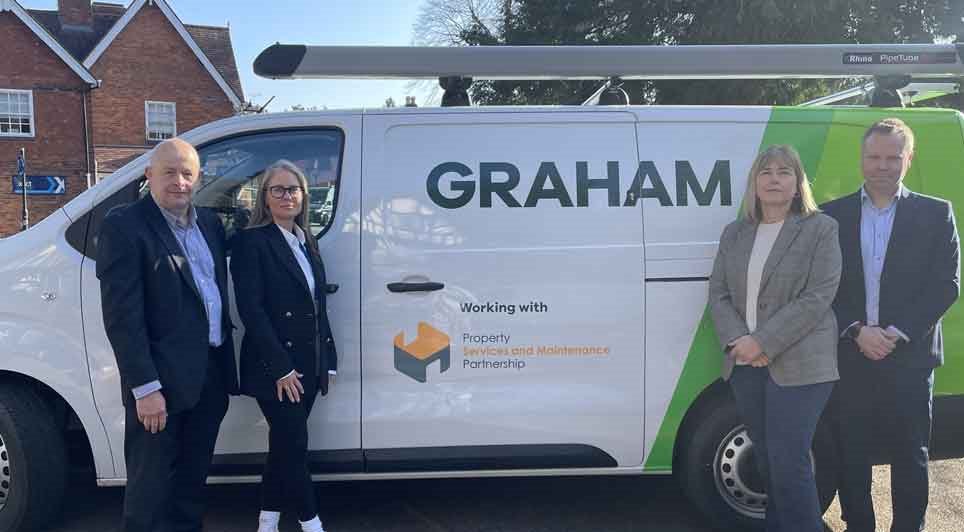This article has been submitted by Greenshank Environmental Ltd.
Greenshank were created to solve the nutrient mitigation issue for both housing developers and landowners.
The only certainty in 2022 was uncertainty. That applied to the Nutrient Neutrality sector as much as the rest of the world. We saw three prime ministers, each with their own legislative agenda and focus. We have seen 'Brexit Bonfires' ignited, part-extinguished and left smouldering. Much of this leaves us hesitant to forecast what 2023 will bring, however, fortune favours the brave!
Nutrient mitigation markets will develop, but unevenly
The Solent Region leads the way in terms of creating a functioning Nutrient Neutrality market. However, many Nutrient Neutrality areas still have very limited mitigation supply.
We foresee some catchments beginning to have more nutrient mitigation supply in 2023. These are likely to include the Norfolk Broads / River Wensum, Stodmarsh in Kent, The Tees Valley and Teesmouth and Cleveland Coast, The Rivers Lugg and Wye in Herefordshire, the Somerset Levels and Moors and the Hampshire Avon. However, it is likely that most of these areas will not see many mitigation schemes come online until later in 2023.
Catchments like the River Eden, The Peak District Dales, The River Clun, the River Camel and the River Axe will likely remain quite limited in the availability of nutrient mitigation throughout 2023.
Wales will continue with a more centrally led and strategic approach to the issue in affected SAC river catchments, with initial schemes starting to come online in the latter part of 2023. Confidence: 8/10
Mitigation prices will render development in some areas non-viable
One of the largest issues we foresee stems from the disparity between the amount of mitigation needed for developments that connect to wastewater treatment works with nutrient stripping Vs connection to treatment works without nutrient stripping.
Developments connecting to treatment works without nutrient stripping need as much as 10 times the amount of mitigation per new house. This has led to mitigation being priced per roof, not per kilo. While the market for mitigation is so hot, the cost of mitigation for those developments that need more mitigation due to the treatment works they are connecting to is likely to push them past viability thresholds. We see these unfortunate developers as either needing to wait for 3-5 years until mitigation supply catches up with demand or to invest in their own site-specific mitigation scheme.
You may also want to read further about our thoughts on the trajectory of nutrient stripping upgrades at wastewater treatment works here.
Confidence: 9/10
Political appetite to challenge Nutrient Neutrality has faded
It wasn't long ago that we had our hearts in our mouths waiting for the next Liz Truss announcement on Nutrient Neutrality, Investment Zones and Brexit bonfires. Thankfully, the new leadership has had something of a stabilising effect Jacob Rees-Mogg has also lost steam in review of around 4000 pieces of EU legislation by the end of 2023. This exercise had caused much alarm to environmental groups, as the biggest proportion of retained EU law sits under the umbrella of Defra, including laws like the Habitat Regulations from which Nutrient Neutrality originated.
It is also clear that rolling back environmental protections lacks public support and draws significant opposition from an increasingly assertive environmental lobby. The coordinated pushback by environmental groups to Truss’ attempted bonfire of environmental regulations shows these laws will not be removed without a fight.
Whilst we can't rule out a renewed assault on environmental laws, it seems like the existential political threat to Nutrient Neutrality (and wider environmental regulations) has faded.
Confidence 8/10
New guidance on how to mitigate nutrients will increase market supply
For landowners to agree to invest in nutrient mitigation schemes, they need a level of confidence in the deliverability and the value of the scheme. Natural England has been very forward-thinking on this issue. Their framework for nutrient treatment wetlands, published in late 2022, provides guidelines on how to design and deliver a wetland that will deliver nutrient mitigation with the required certainty.
Expected early this year, Natural England will also be publishing guidance on land management techniques that can deliver nutrient mitigation with the requisite certainty, assuming they are designed correctly. Greenshank’s CEO, Gabriel, has been central to the team that wrote this guidance. Guidance on these techniques will open up more mitigation opportunities across catchments affected by Nutrient Neutrality.
Together, these guidance documents will support the delivery of mitigation schemes, which will in turn increase supply, with some approaches able to deliver a functional mitigation scheme in as little as 6-9 months. The increase in supply will reduce mitigation costs for developers. It is likely that more widespread mitigation delivery will be seen in late 2023, so the downward pressure on mitigation prices is likely to increase more in 2024.
Confidence 9/10
The impact of the Levelling Up Bill on AMP8 will be challenged
As Greenshank recently identified in a blog, The Levelling Up and Regeneration Bill (LURB) TAL Amendments, if they pass, will require water companies in Nutrient Neutrality areas to complete 4x the amount of wastewater treatment works upgrades over AMP8 than are being completed in AMP7. This is a Herculean task that whilst not impossible, seems somewhat implausible. Will the Water Sector challenge the amendment? At the moment water companies seem to be quite tight-lipped on this issue, and some conservations we have had seem to suggest they are resigned to having to try and deliver it. Perhaps given the bad press they are getting at the moment they don’t want to be seen to be pushing back against something that is ultimately good for the environment.
However, what we have not seen in dialogue on the LURB and its impacts is that a coordinated effort to deploy wetlands and land management solutions could probably unlock housebuilding in affected areas in the medium-term, buying the water sector more time to deliver the upgrades that can help with the long-term response to Nutrient Neutrality. These nature-based solutions are cheaper and quicker to deliver than treatment works upgrades, as well as being much better for the environment. Seeing as upgrading 128 treatment works will require something like an extra £1 billion investment into the Water Sector in AMP8, there may well be some kind of challenge to the LURB TAL Amendments.
Confidence: 6/10
Welsh Nutrient Management Boards will start to deliver, but maybe not fast enough
So far our predictions have been quite England-centric. Nutrient Neutrality is not, however, just an English issue, with 20 Welsh LPAs in 6 river catchments needing phosphorus mitigation to permit new development. Wales are aiming for a more centrally led, strategic approach to nutrient mitigation than the more market-led approach developing in England. Each affected river catchment has a Nutrient Management Board (NMB) that is coordinating the response to Nutrient Neutrality across the LPAs that fall within each catchment. The NMBs are starting to make progress towards deploying mitigation schemes and we predict that some strategic mitigation schemes will start to be delivered towards the end of 2023. It seems likely that one of the key solutions for phosphorus mitigation, strategic wetlands, will be hampered by Dwr Cymru Welsh Water (DCWW) holding off on committing to schemes until Natural Resources Wales completes their Review of Permits off the back of DCWW’s recent source apportionment work (which is also still being completed, as far as we are aware).
This timeline for delivery of mitigation measures by the NMBs may not be fast enough for some developers, who are facing significant threats to their businesses due to the inability to get planning consents. We may see some developers start coming forward with their own schemes if they think they can be delivered faster, resulting in the emergence of a hybrid between the English market-led approach and the Welsh NMB-led approach.
Confidence: 7/10
greenshank-environmental.com
Construction News
20/01/2023
2023 Nutrient Neutrality Predictions


07/04/2025
GRAHAM has secured a partnership contract with Solihull Council for the delivery of hard facilities management (FM) services under the established Property Services and Maintenance Partnership.
The new agreement, awarded after a competitive procurement process, extends a relationship with Solihull

07/04/2025
Fleete has started construction on what is believed to be the largest dedicated commercial vehicle electric charging hub in the UK.
The shared facility, located in the Port of Tilbury, is on track for completion in December 2025.
The project marks the first works funded by the UK Government under

07/04/2025
Tenants are now settling into newly built, energy-efficient council homes in Middlecroft, as Chesterfield Borough Council completes the latest phase of its housing development programme.
Two three-bedroom houses on Ringwood Avenue have been handed over to their new occupants, while work has also fi

07/04/2025
A new health centre in Didcot has reached a significant milestone after receiving planning approval from the Vale of White Horse District Council.
The centre, located in Great Western Park, is set to enhance primary health care delivery in the area, which is managed by the Buckinghamshire, Oxfords

07/04/2025
Roof lanterns are one of the star players in the world of skylights, bringing a touch of glamour and luxury to a growing number of homes across the UK.
If you have one at the top of your wish list, we're here to help with expert advice, top brand rooflights and a roof lantern buyer's guide to ligh

07/04/2025
The Vale of Glamorgan Council is launching a new renewable energy initiative designed to help residents invest in solar panels and battery storage through a group-buying scheme.
The scheme, known as Solar Together, marks the first opportunity for South East Wales homeowners to benefit from a model

07/04/2025
Persimmon welcomed Wales' Cabinet Secretary for Housing, Jayne Bryant MS, to its Construction Academy in Llanilid this week.
The visit, which included a tour of the facility and a nearby Morgans Walk site, was led by Persimmon's chairman in Wales, Stephen Cleveley, along with managing directors St

07/04/2025
HLM Architects has successfully completed its leadership transition, marking the next phase in its evolution as an Employee Ownership Trust (EOT).
A carefully structured leadership shift will strengthen HLM’s position as an innovative, people-focused practice, ensuring long-term stability and futu

04/04/2025
A major new multi-generational housing scheme is set to take shape in Congleton after the McGoff Group secured unanimous planning approval for its proposed development on Morley Drive, the former site of John Morley Limited.
Approved at a recent planning committee meeting, the joint application fro

04/04/2025
GMI Construction Group has broken ground on a new £17 million purpose-built student accommodation (PBSA) development on Foss Islands Road, marking its third major student housing project in York.
The five-storey scheme, developed in partnership by Urbium Capital and Harrogate-based Gregory Properti
 UK
UK Ireland
Ireland Scotland
Scotland London
London











